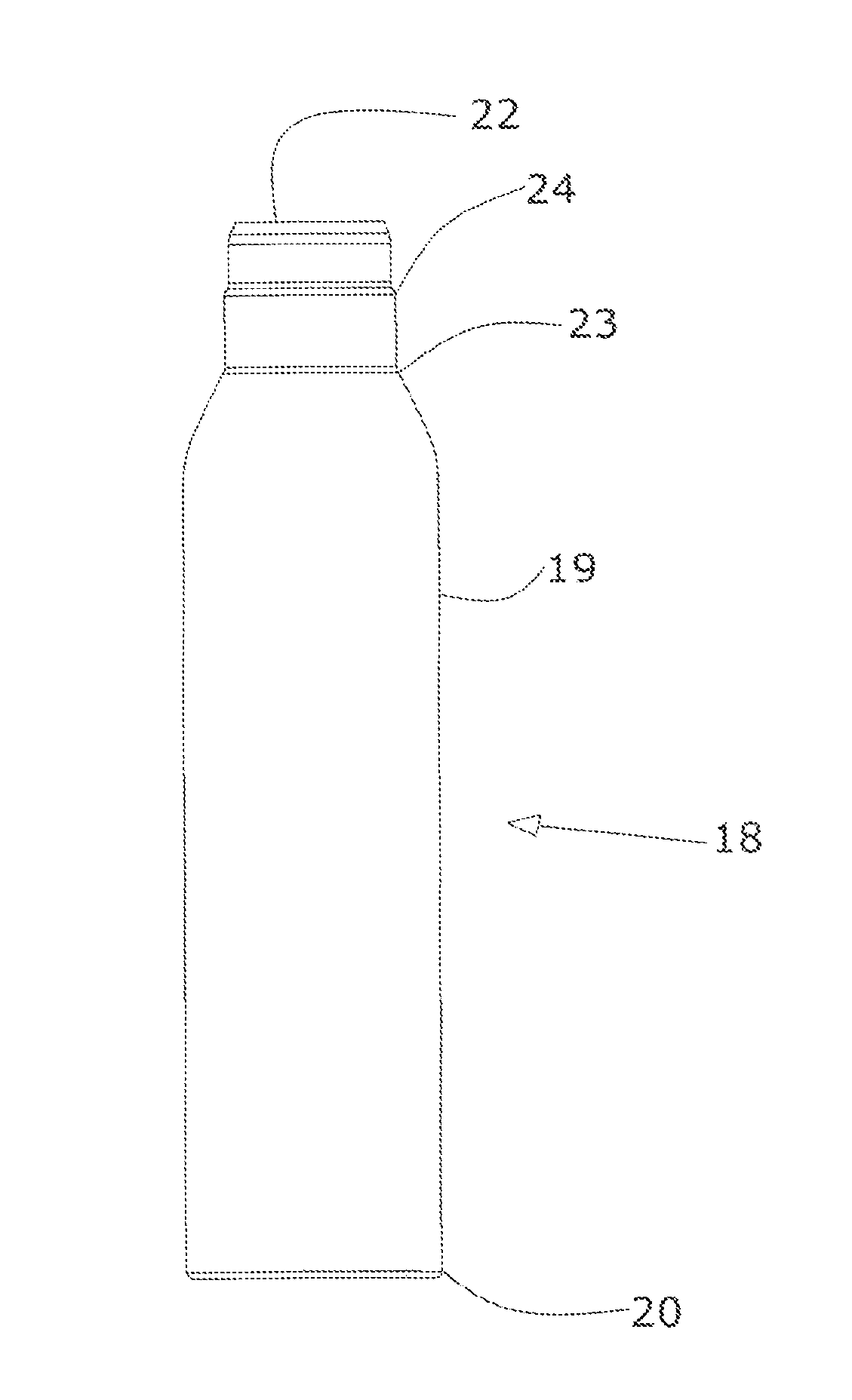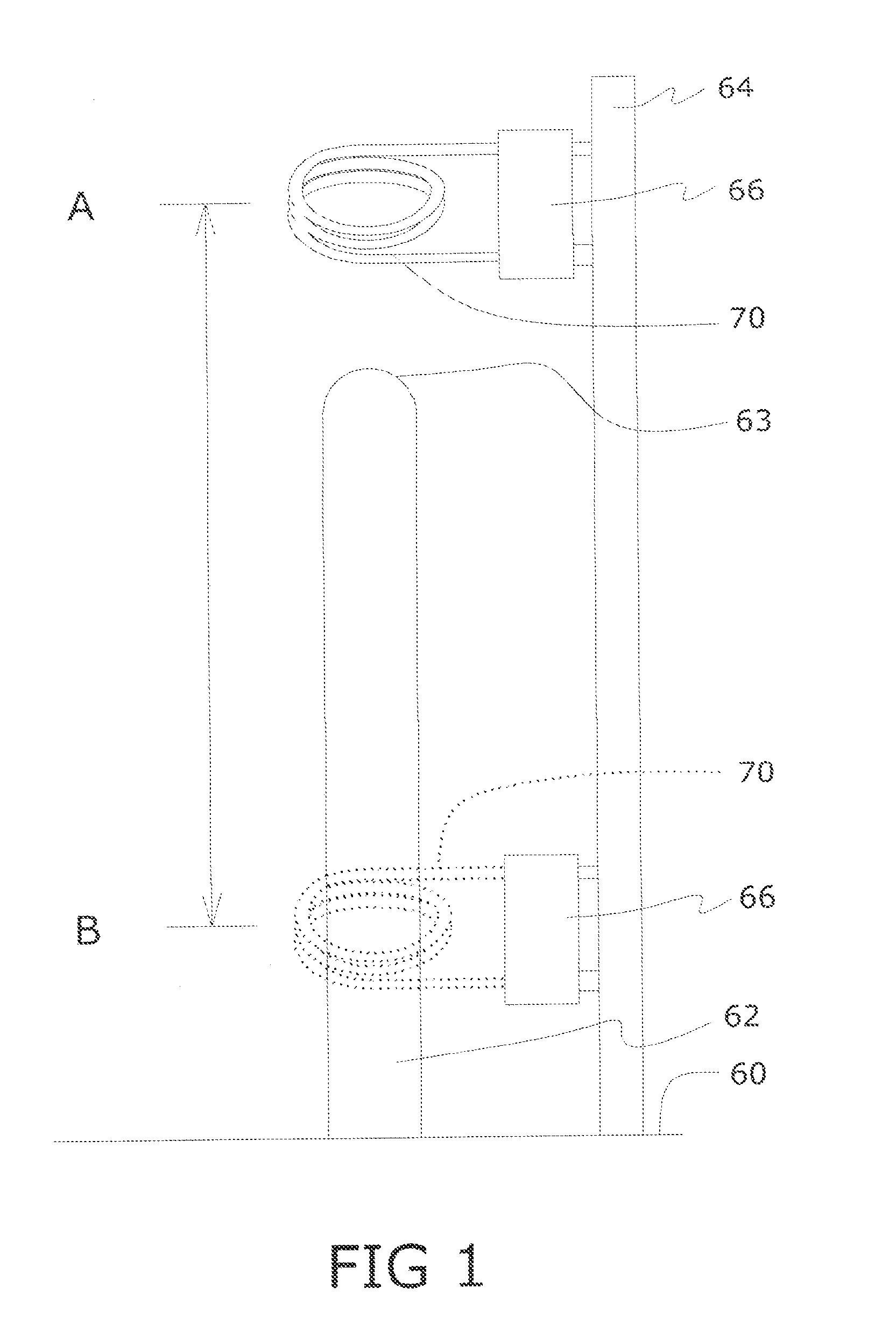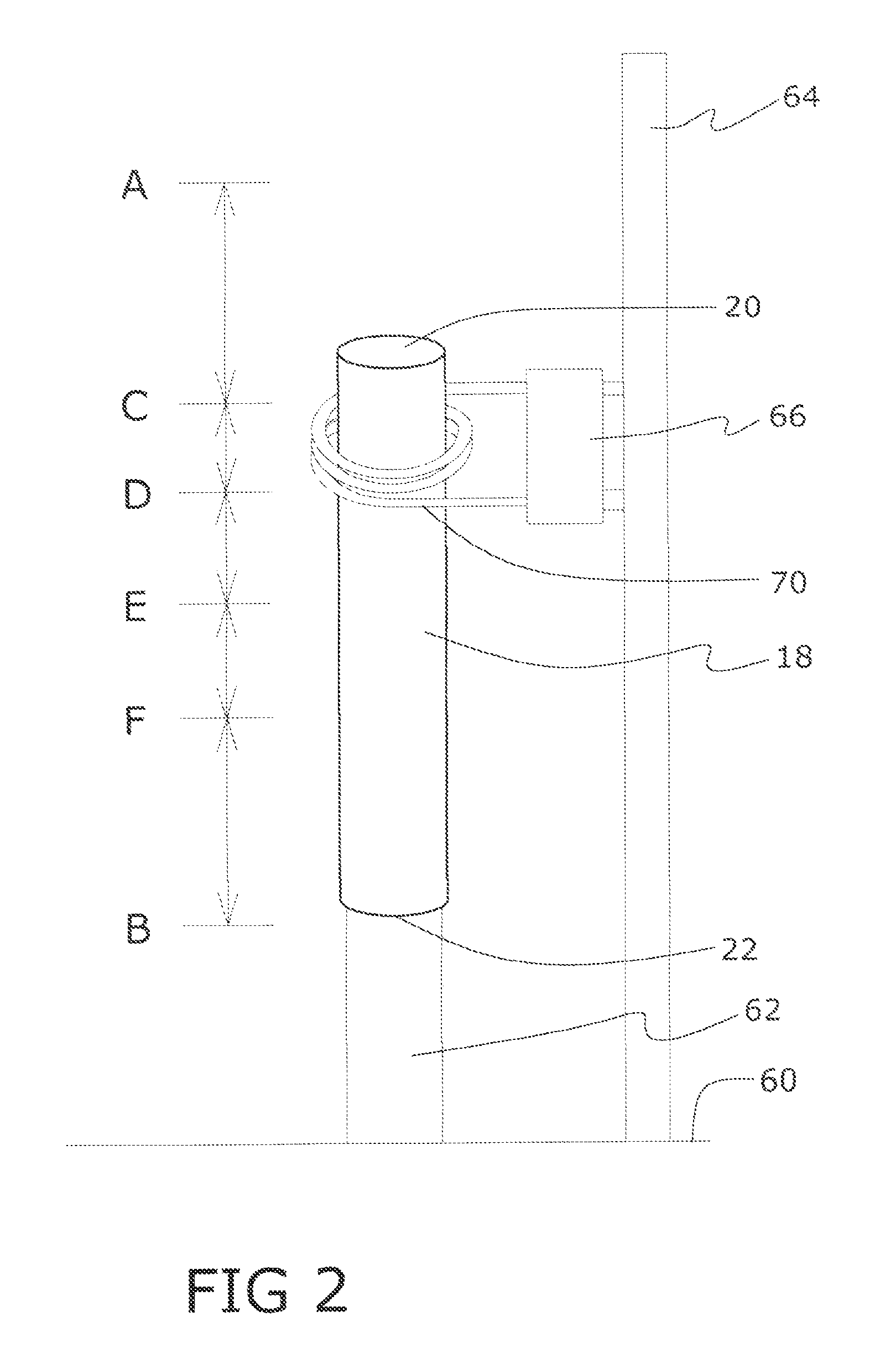Method for blow molding metal containers
a metal container and blow molding technology, applied in the field of metal container blow molding, can solve the problems of inefficient heating to anneal impact extruded preform by convection, impact extruded preform is subject to localized failure of preform material upon further deformation, and is known to be subject to significant work hardening and a very high dislocation density, so as to achieve significant work hardening and high dislocation density , the effect of increasing the wall thickness
- Summary
- Abstract
- Description
- Claims
- Application Information
AI Technical Summary
Benefits of technology
Problems solved by technology
Method used
Image
Examples
example
Preform
[0126]Commercially available aluminum slugs made of a Series 1100 or 3000 Alloy, having a 38 mm diameter and 12 mm thickness were impact extruded in a conventional impact extruder setup (Schuler Press) into an cylindrical aluminum preform of 38 mm diameter having a closed, flat bottom and a cylindrical sidewall of about 200 mm height and 0.333 mm thickness. The preform was subjected to conventional trimming, cleaning and brushing treatments, to generate an even top edge, remove extrusion lubricant and provide an overall even external appearance.
Annealing
[0127]A commercially available cylindrical induction coil (FCF) of 42 mm diameter and about 50 mm height was used in the annealing treatment. The preform was placed on the mandrel 63 and the coil 70 was moved over the preform at constant speed. A voltage of 380V at a frequency of 300 Hz was applied to the coil at a total energy input of 15 kW. The efficiency of the induction heating process was calculated at about 38%, which t...
PUM
| Property | Measurement | Unit |
|---|---|---|
| Temperature | aaaaa | aaaaa |
| Temperature | aaaaa | aaaaa |
| Temperature | aaaaa | aaaaa |
Abstract
Description
Claims
Application Information
 Login to View More
Login to View More - R&D
- Intellectual Property
- Life Sciences
- Materials
- Tech Scout
- Unparalleled Data Quality
- Higher Quality Content
- 60% Fewer Hallucinations
Browse by: Latest US Patents, China's latest patents, Technical Efficacy Thesaurus, Application Domain, Technology Topic, Popular Technical Reports.
© 2025 PatSnap. All rights reserved.Legal|Privacy policy|Modern Slavery Act Transparency Statement|Sitemap|About US| Contact US: help@patsnap.com



